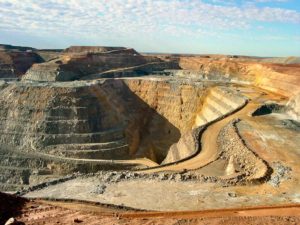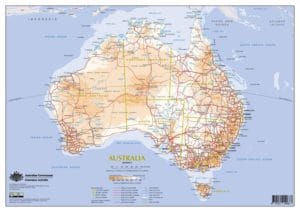The Australian dollar is the currency for the nation, including Christmas Island, Cocos (Keeling) Islands, and Norfolk Island, as well as the independent Pacific Island states of Kiribati, Nauru, and Tuvalu. With the 2006 merger of the Australian Stock Exchange and the Sydney Futures Exchange, the Australian Securities Exchange became the ninth largest in the world.

The service sector of the economy, including tourism, education, and financial services, accounts for about 70% of GDP. Rich in natural resources, Australia is a major exporter of agricultural products, particularly wheat and wool, minerals such as iron-ore and gold, and energy in the forms of liquefied natural gas and coal. Although agriculture and natural resources account for only 3% and 5% of GDP respectively, they contribute substantially to export performance. Australia’s largest export markets are Japan, China, the US, South Korea, and New Zealand. Australia is the world’s fourth largest exporter of wine, and the wine industry contributes A$5.5 billion per year to the nation’s economy.
Transportation:
Roads:
Road transport is an essential element of the Australian transport network, and an enabler of the Australian economy. There is a heavy reliance on road transport due to Australia’s large area and low population density in considerable parts of the country.
Another reason for the reliance upon roads is that the Australian rail network has not been sufficiently developed for a lot of the freight and passenger requirements in most areas of Australia. This has meant that goods that would otherwise be transported by rail are moved across Australia via road trains. Almost every household owns at least one car, and uses it most days.

Australia has the second highest level of car ownership in the world. It has three to four times more road per capita than Europe and seven to nine times more than Asia. Australia also has the third highest per capita rate of fuel consumption in the world. Melbourne is the most car-dependent city in Australia, according to a data survey in the 2010s. Having over 110,000 more cars driving to and from the city each day than Sydney. Perth, Adelaide and Brisbane are rated as being close behind. All these capital cities are rated among the highest in this category in the world (car dependency). The distance travelled by car (or similar vehicle) in Australia is among the highest in the world, being exceeded by USA and Canada.
There are 3 different categories of Australian roads. They are federal highways, state highways and local roads. The road network comprises a total of 913,000 km broken down into:
paved: 353,331 km (including 3,132 km of expressways)
unpaved: 559,669 km (1996 estimate)
Victoria has the largest network.
Public Transport in Australia:
Commuter Rail:
Sydney, Melbourne, Brisbane, Perth and Adelaide have extensive commuter rail networks which have grown and expanded over time. Australian commuter rail typically operates with bidirectional all day services with Sydney, Melbourne, and to a lesser extent Perth’s systems operating with much higher frequencies, particularly in their underground cores. Sydney Trains operates the busiest system in the country with approximately 1 million trips per day. Metro Trains Melbourne operates a larger system albeit with a lower number of trips.
